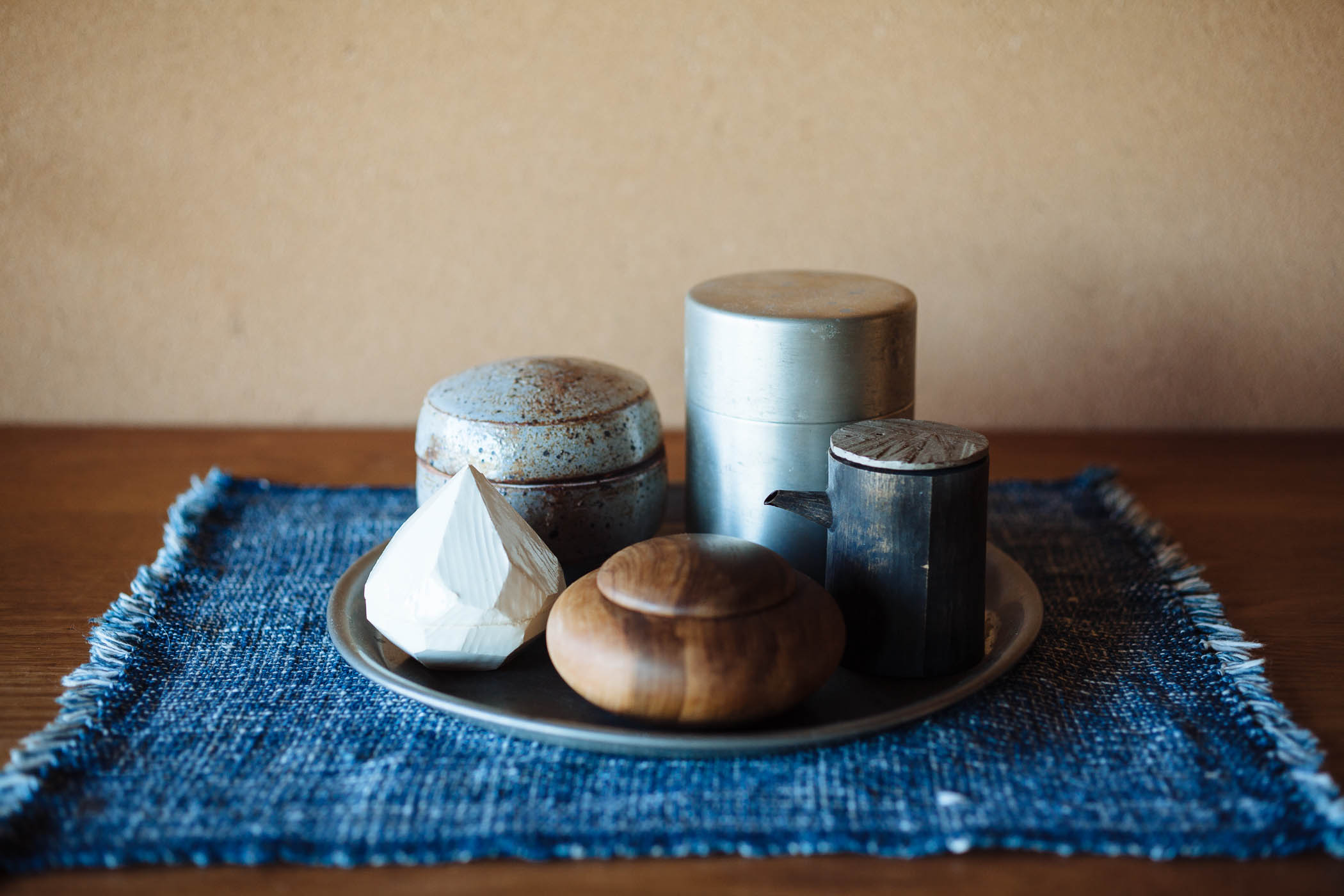A bowl of perfectly cooked grains of rice is a subtle marvel

A kettle of water is set to boil. All dishes are cleared and rinsed and and then we set the table a second time with three dishes, a bowl of rice, a cup of houjicha roasted green tea, and a small plate for pickles. The evening’s tsukemono is presented in a serving bowl. I imagine all families could point to a tradition or custom that defines the way they eat. For us it would be this last course eaten with palpable ceremony.
At the center of the table sits a collection of covered containers, arranged on a vintage pewter plate I brought over from Maine. This gastronome’s treasure chests contains all sorts of gems inside. The lidded container, called futamono is a special kind of vessel and we’ve amassed a nice collection of them over the years made of different materials. Each contains a condiment dedicated to this final stage of eating dinner. A grey ceramic one made of rough clay and dotted with iron spots contains a pile of fresh chirimenjako, small dried fish that we sprinkle over our tsukemono. Another made of pewter, with a perfectly fitting inner lid to keep out the moisture, contains koumiboshi nori, whole dried nori fronds that we sprinkle over rice. A squat, smooth olive wood container we brought back from Portugal holds soft, plump black sesame seeds that I think particularly compliment brown rice. A black, spouted container made of wood holds soy and another of porcelain holds a very light sesame oil. Both of these are used to season the tsukemono pickles.
To finish the meal with rice and pickles is a long-standing tradition in this family and one of the many things I slowly came to understand is uncommon in other homes. It’s a defining custom of cha-kaiseki, the meal served in tea ceremony, that Kuniko and Takashi brought home from the tearoom. In most homes rice is served from the beginning of the meal to be eaten alongside the other dishes. But in the tearoom sake, made of rice, takes the place of actual rice and is sipped throughout the meal. It’s only when the sake is put away that a final dish of rice is presented with pickles.
The bowl of plain white rice challenges many who aren’t accustomed to it. But a bowl of perfectly cooked grains of rice is a subtle marvel. Kuniko has a passion for rice and eats the volume to prove it. Most nights I’ve barely taken my third or fourth bite when she is up and off to the kitchen to refill her bowl. But tsukemono is her true passion. She gathers a bit of each vegetable, red radish, white daikon, orange carrot, green turnip greens, onto her little plate. She piles on the chirimenjako, and drizzles soy and sesame oil over everything. Then she tosses it gently, like a salad in miniature. Despite being the very same ingredients, her pickles glisten in a colorful array, looking far more delicious than ours. But then she’s has always had a special relationship with tsukemono. When the mind to muscles synapses were all jumbled after her stroke, and she could barely utter single syllable words, the complicated sounds of the work tsukemono flowed freely and frequently from her lips, the work serving as a place holder for all the other things she couldn’t yet say.